Behold, the crossover:

Its function is simple: Balls coming in from the left go out the right and balls coming in from the right go out the left. But it was one of the most frustrating parts to design.
In the first full prototype of the game, the board didn’t have pins sticking out that the parts fit into. Instead, the parts had pins sticking out of them and the board had holes in it.
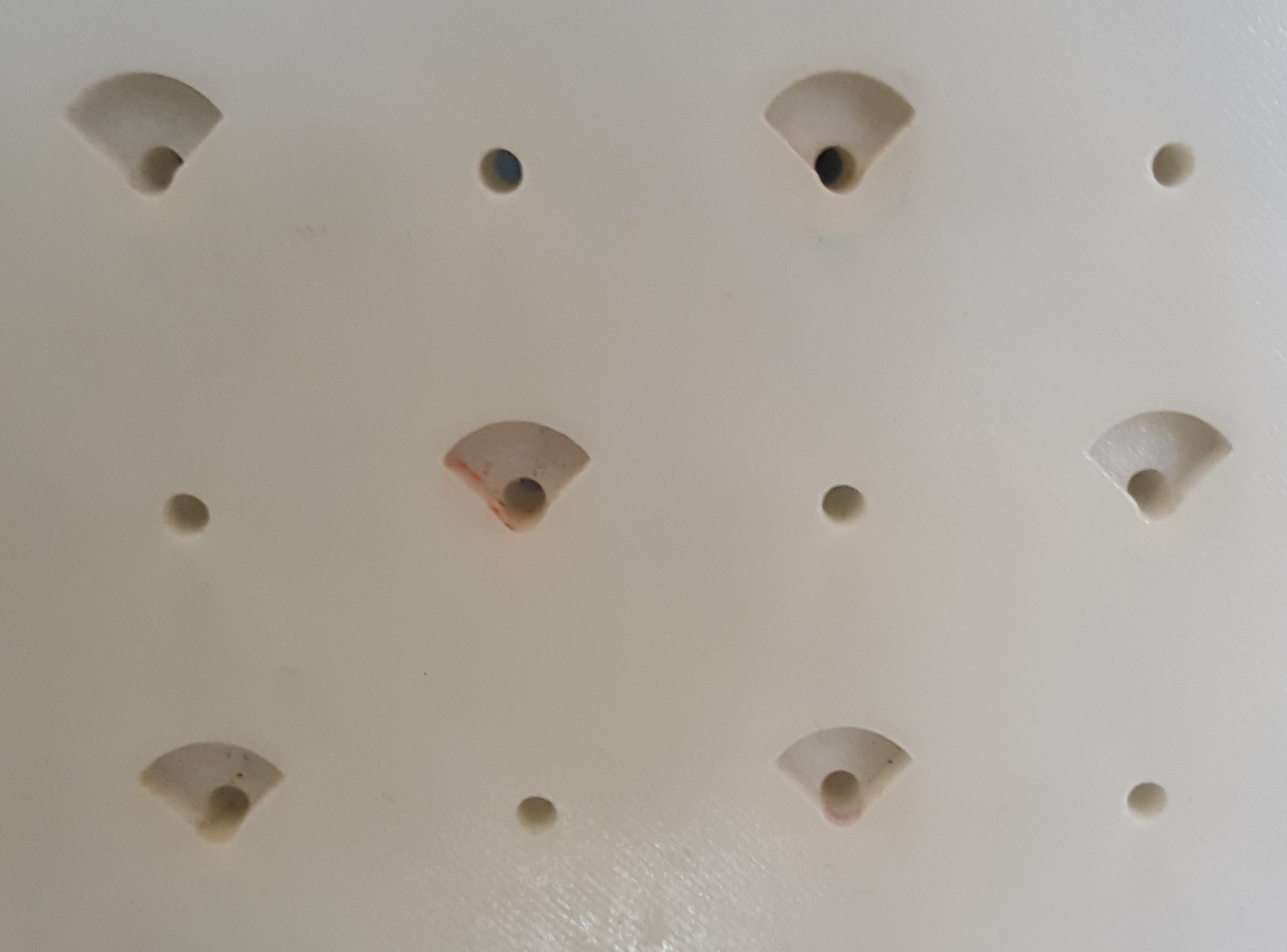
(Front view of the holes in the 1st prototype board)
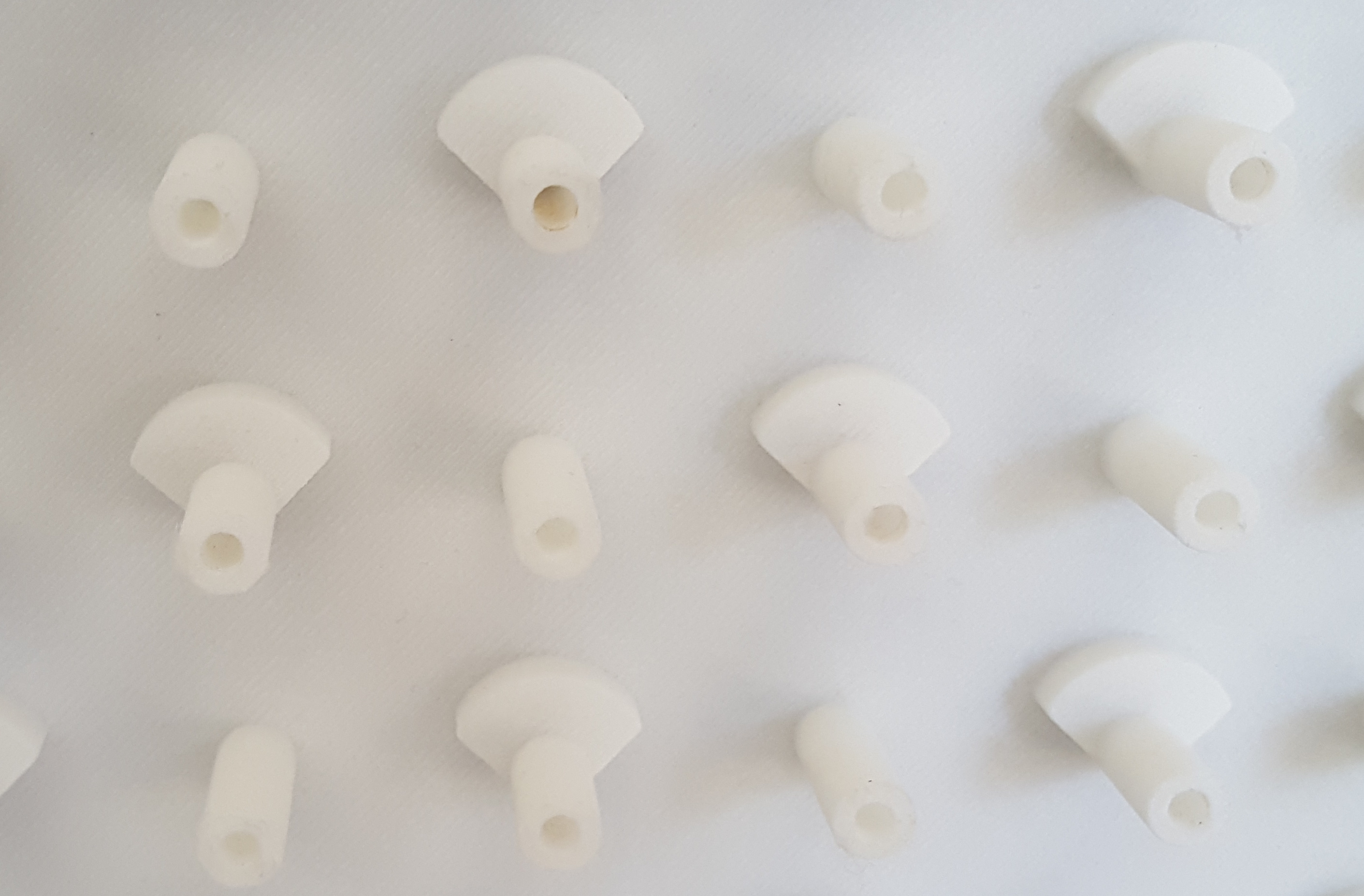
(Back view of the holes in the 1st prototype board)
With this design, the crossovers looked like this:
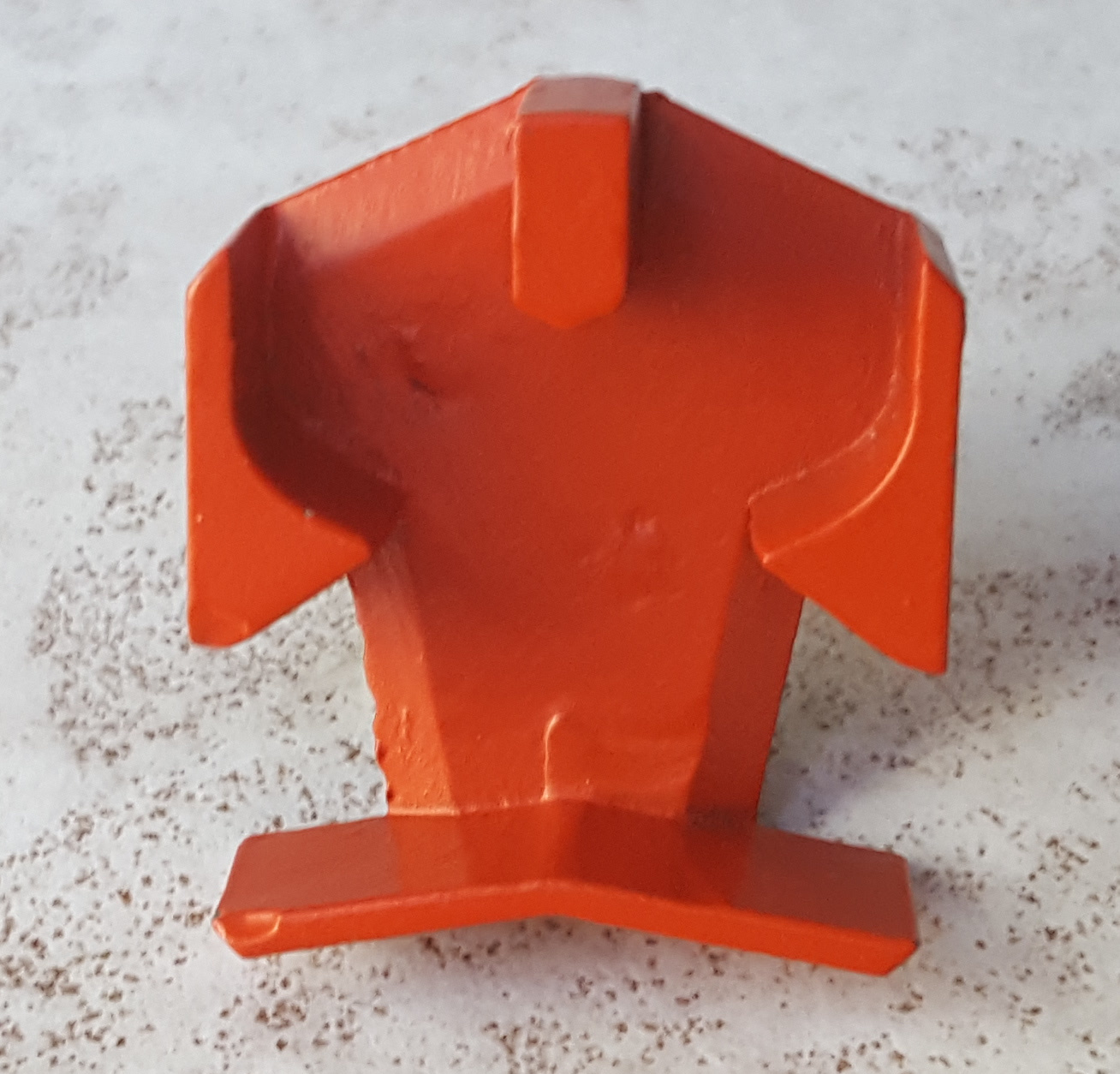
(Front view of old crossover)
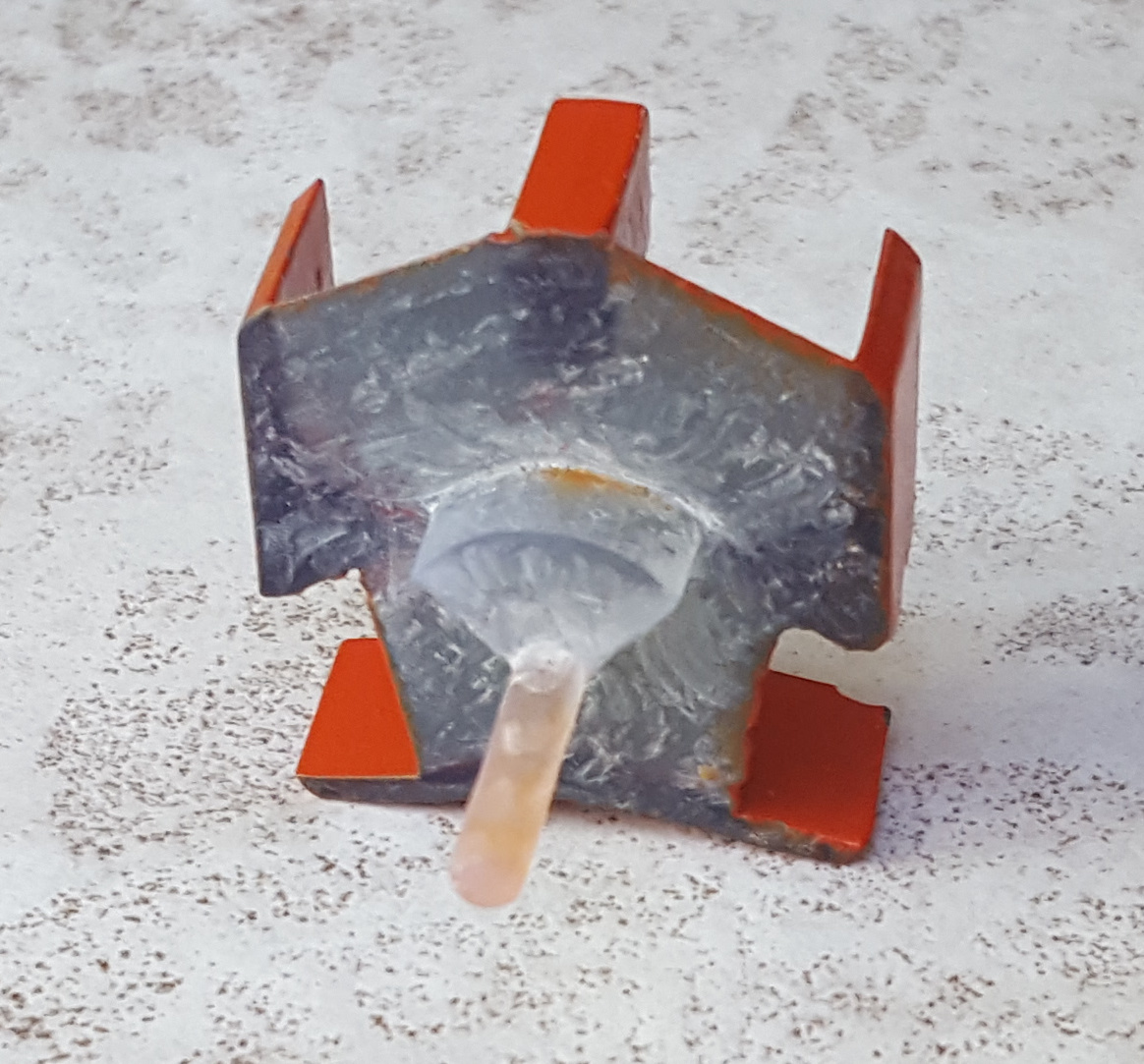
(Back view of old crossover)
The old crossovers worked like a charm.
However, the overall design wasn’t great. The parts were a bit delicate (the pins could break off) and the board used a lot of plastic around each of those holes. So in the current version, the board has sturdy little pins that stick out the front and the parts have holes in them.
This new design worked really well for all of the parts except the crossover. The main problem was that there wasn’t enough space between the pin sticking through the crossover and the bottom platform. Balls dropped onto the platform and would frequently bounce up and hit the pin, sometimes causing them to exit the crossover on the wrong side. Like this:

I couldn’t figure out how to make it work by messing with the crossover design. One thing I tried is to put the crossover on top rather than on bottom like this:
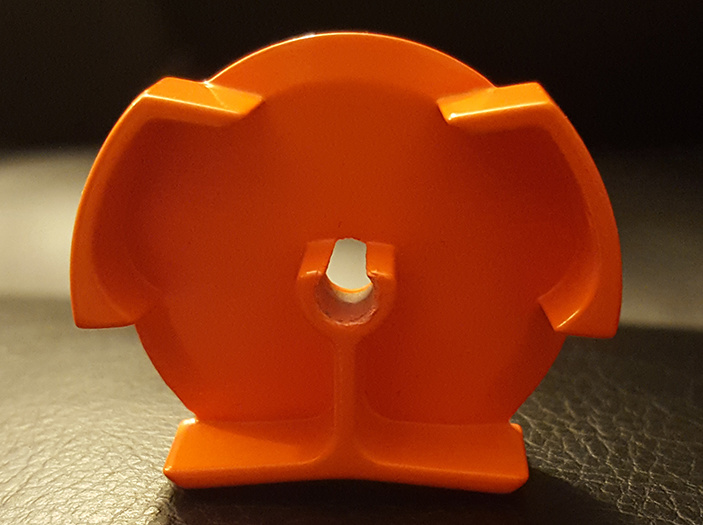
But it had a similar problem. The balls would often bounce off the top of the pin and then hit the ceiling on the other side, like this:
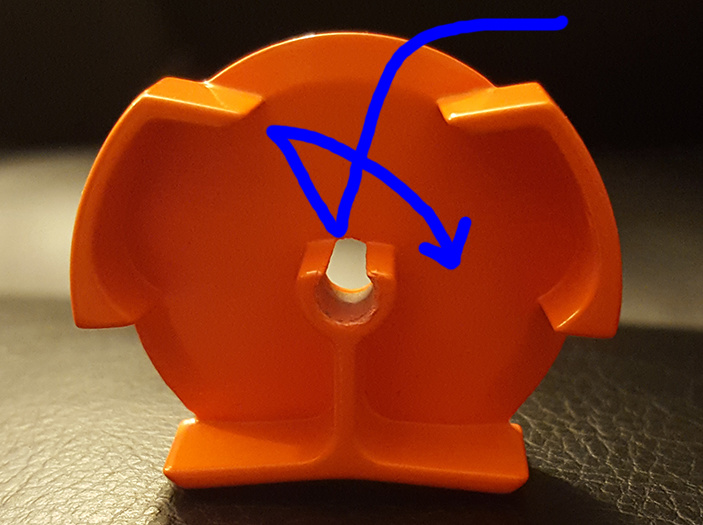
I ended up just making the balls smaller to create more space. Rather than using 3/8" diameter balls, I switched to 5/16" balls. That left a little room to allow a small bounce without hitting the pin above it. It was a bummer to have to switch, though. The lighter balls can’t push as many gear bits at once and they are more difficult to manipulate.
Can you create a better crossover?


